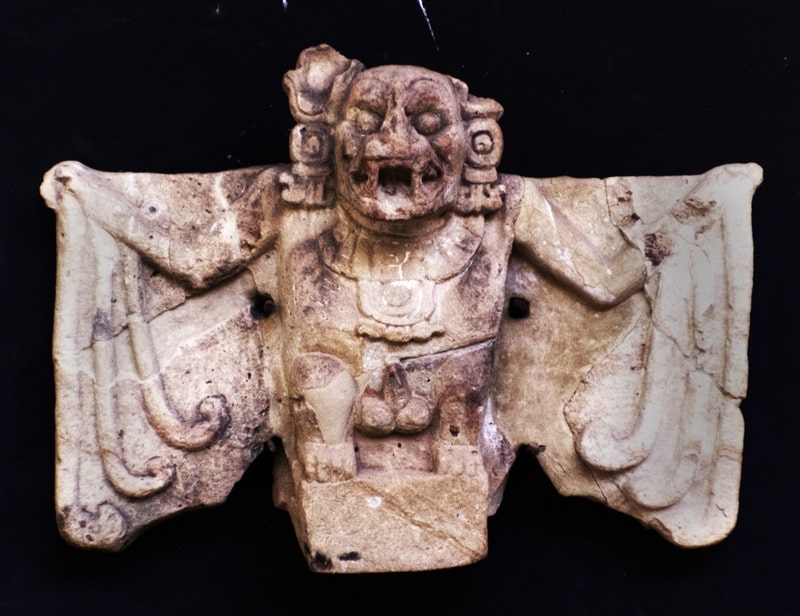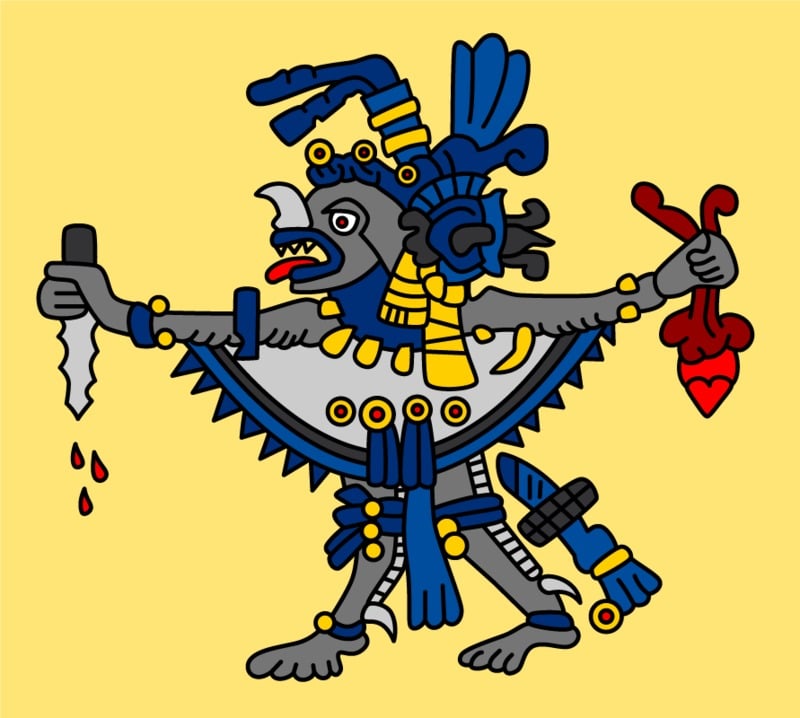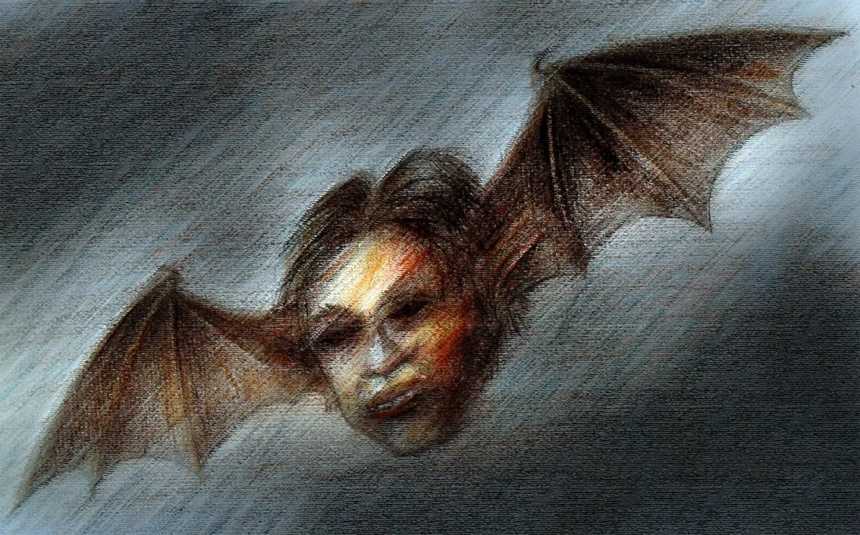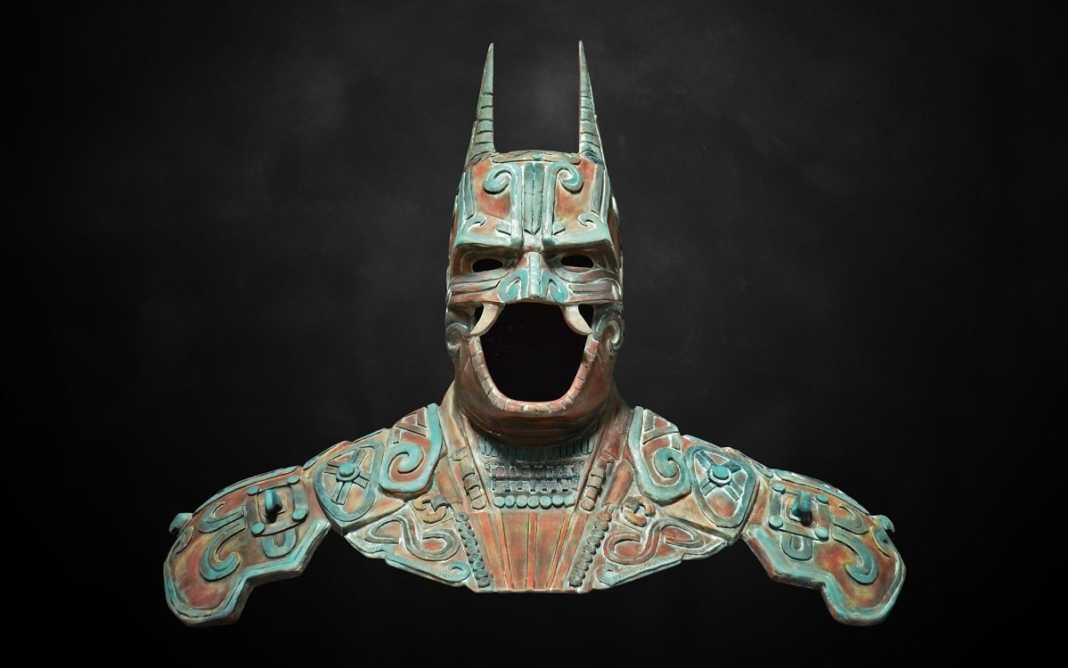What if we told you that a far darker and more ancient version of Batman first existed thousands of years ago? His name was Camazot and he was the Mayan bat god of night, sacrifice, and death.
The Maya considered him a terrifying god who served death and ruled the domain of twilight. He lived in bloody grottoes and other dark places that people tried to avoid for fear of disturbing him. There are many references from this character and the descriptions agree on it being half-human, half-bat.
Camazotz was often depicted holding his victim and a knife. This deity appears in the Popol Vuh and is still a very prominent figure in the continuing Maya religion.
Origins of Camazotz
The worship to Camazotz dates back to 100 B.C. among the Zapotecs in Oaxaca, who, apparently, were the first to worship an anthropomorphic entity with the head of a bat and the body of a human. The figure was later adopted into the pantheon of the Maya Kʼiche tribe and the legends of the bat god were later recorded in Maya literature.

The Zapotecs believed bats represented night, death, and sacrifice. This was likely due to the fact that the bats would inhabit the caves around the sacred cenotes, which the Mesoamericans believed were portals to the underworld. It would be a very chilling sight at dusk when the bats would swarm out of these ‘portals’ and begin drinking the blood of the other animals. The god is also commonly depicted holding a sacrificial knife in one hand and a human heart or sacrificial victim in the other.
Camazotz’s name literally means “death bat” in the Kʼicheʼ language. The Kʼiche’, a Mayan people, are the original inhabitants of the Guatemalan Highlands, where their lush culture flourished long before the age of Spanish conquest. The K’iche’ linked the bat-god with their god Zotzilaha Chamalcan, the god of fire.
Much of the surviving history and traditions of the K’iche’ can be found in a text they produced which is called the Popol Vuh.

Popol Vuh
The Popol Vuh, which translates literally as the “Book of the People,” contains a collection of Mayan stories and legends that were originally passed down through oral tradition. They were finally committed to paper in 1550 and were preserved when an 18th-century Dominican friar named Francisco Ximénez translated them into Spanish.
In the Popol Vuh, Zotzilaha was the name of a cave inhabited by the Camazotz, a monster with a roughly humanoid body, the head of a bat, and a nose that resembled a flint knife. The monster was said to attack victims by the neck and decapitate them. In the Popol Vuh , it is recorded that this creature decapitated the Maya hero Hunahpu. Camazotz is also one of the four animal demons responsible for wiping out mankind during the age of the first sun.
Camazotz and the Hero Twins
The Popol Vuh contains one of the most notorious of Camazotz’s surviving tales, in which he encounters the Mayan Hero Twins Hunahpú and Xbalanqué.
The legend is that the hero twins slept inside their blowguns as protection from the bats (referred to as Camazotz). However, when the bats went silent, Xbalanqué asked Hunahpú to check if dawn had come and Hunahpú did so by poking his head out of the tube. But, in fact, it was not yet dawn and one of the bats took the opportunity to swoop down and rip away Hunahpú’s head, leaving him decapitated.

Xbalanqué was left inside the tube, questioning what his brother was seeing and why he had gone so still without receiving any answers. The bat then took the head of Hunahpú to the ball court of the Xibalba lords to be gruesomely displayed and used as a ball while the lords rejoiced in their assumed victory.
Chonchon – A vampire-type monster
Bat-like demons and monsters are common in South America and Central America. Another example of such a story is the Chonchon, a vampire-type monster in Peru and Chile. It is said that after a person’s death, the head will sometimes sprout enormous ears and lift off from the shoulders. Could the legends of the Chonchon have sprung from the same source as the Camazotz legends?

A scientific explanation
Most scholars believe that Camazotz was inspired by the common vampire bat, but others have suggested that it was based on a giant vampire bat that (probably) went extinct sometime during the Pleistocene or Holocene periods.
In 1988, a fossil of a vampire bat was discovered in the Mongas province of Venezuela. The bat was larger than the modern vampire bat by 25% and was dubbed Desmodus Draculae. It is more popularly known as the giant vampire bat.
Sites containing examples of it have been found in the Yucatan, Belize, northern Brazil, and Venezuela. In 2000, a tooth from Desmodus Draculae was found in Argentina – much farther south of the modern range of the Desmodus genus. It is difficult to date exactly when Desmodus Draculae went extinct, or if it went extinct at all.

While Camazotz enjoyed his heyday in Mayan culture thousands of years ago, his legacy still lives on to this day.
A few years ago, Camazotz also inspired a common internet rumor. It claimed that a Batman-style bust had been found amongst ancient Mayan ruins and was even accompanied by a really cool photo. Unfortunately, the piece in question was actually created in 2014 as part of a Warner Brothers promotion.
Warner Bros Entertainment invited 30 artists to reinterpret Batman on the occasion of its 75th anniversary. One of those who accepted the assignment was Christian Pacheco, owner of the design firm Kimbal, based in Yucatán, Mexico.
Inspired by a love of both Batman and history, Pacheco created a sort of Camazotz-style Batman bust that was so realistic, many people on social media mistook it for an actual artifact.
References:
- The Camazotz from Blueroadrunner.com
- Is This an Ancient Mayan Sculpture of Batman? from Snopes.com


